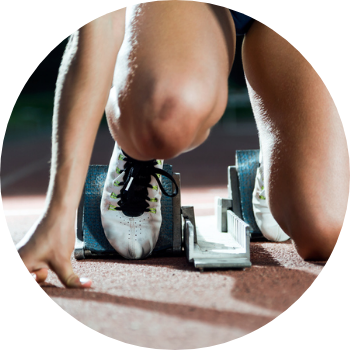Start your extensive look at ligaments
Ligaments are made of fibrous connective tissue and provide stability to the skeleton by connecting one bone to another bone. They are holding joints in place, preventing from dislocating or injuries and allowing movement such as twisting, jumping, or side-to-side motion. The knee joint is an example of strong ligament connections. Good ligaments are necessary to practice healthy sporting activity without problems and to have a good normal life.
What happens when a ligament is injured?
When extreme motion is applied to a joint, such as twist, fall or another high-impact event, the ligament can be damaged or totally torn. A damaged ligament results in joint instability, reduced articular performance and high risk to develop osteoarthritis or degenerative changes. Persons with damaged ligaments feel pain, swelling, and discomfort. The activities of daily and professional life could be severely limited by these accidents.
What are the treatment options to restore function?
Low grades injuries can heal using a non-surgical treatment, such as a combination of bracing, physical therapy, heat therapy or medication. The healing can take weeks to months. Severe or complete ligament injuries need surgery to restore a natural articulation: the reconstruction or the reinforcement is necessary and autograft, allograft or a synthetic ligament could be used during surgery. The surgical is mandatory to restore a functional articulation, reduce pain, restore circulation, prevent arthritis, and strengthen the surrounding area to support the tissue.
The treatment choice will depend on factors such as your age, your activity level, and the severity of your injury and will be recommended by your orthopaedic surgeon. Tears of any grade require attentive care. Should you suspect a torn ligament, ask for medical advice.
What are the different surgical reconstruction options?
- Autograft: tissue is obtained from another part of the patient’s own body, for example: patellar tendon, hamstring tendon, quadriceps tendon, fascia lata.
- Allograft: obtained from a donated tissue such as a cadaver
- Synthetic/artificial graft: artificially produced and designed to mimic the anatomic ligament fibres
- Hybrid reinforcement: autograft or allograft reinforced with a synthetic/artificial graft
What is an artificial ligament?
An artificial ligament seeks to mimic the native ligament and is made out of a biocompatible material, functioning in vivo without systemic response in the body. Also, mechanical performances of artificial ligaments can be characterized by abrasion resistance or rotational fatigue limitation. The implantation of an artificial ligament is a very specialized technique, performed in centers of excellence, recommended for athletes and patients requiring high performance.

Ligaments are slower to heal than other types of soft tissue due to a low vascularity
Ligaments connect bones to other bones, helping to stabilize the joints
Restore your infinite mobility with LARS™
Artificial ligaments mimic the anatomical properties of the natural ligament
SHOULDER
The acromioclavicular joint (ACJ) is a fundamental structure for the stability of the clavicle and of the scapula. Two strong ligaments guarantee its solidity: the conoid and trapezoid ligaments. The acromioclavicular ligament serves to reinforce the joint capsule. Injury of the acromioclavicular joint happens when falling sideways on the shoulder, typical of cyclists, or in strong contrast activities such as rugby.
LEARN MORE
More than 150 000 LARS ligaments have been implanted
KNEE
The knee joint is stabilized by four ligaments: the anterior and posterior cruciate ligaments (ACL and PCL), the medial collateral ligament (MCL) and the lateral collateral (LCL). Injuries to the ACL and PCL are the most common sports-related injuries, particularly in skiing, basketball, football but also hockey and all contact sports. Without cruciate ligaments, the quality of your knee decreases.
LEARN MORE
Artificial ligaments are biocompatible
FOOT and ANKLE
Ankle ligaments are found throughout your foot, ankle and lower leg. They are short and very strong and is composed of three main ligament complex. The lateral ligament complex is the most injured (lateral ankle sprain). These injuries are typical of sports such as football or athletics, but also of simple falls during everyday life.
LEARN MORE
LEARN MORE
Medically reviewed by Dr Matteo Izzo, Switzerland



